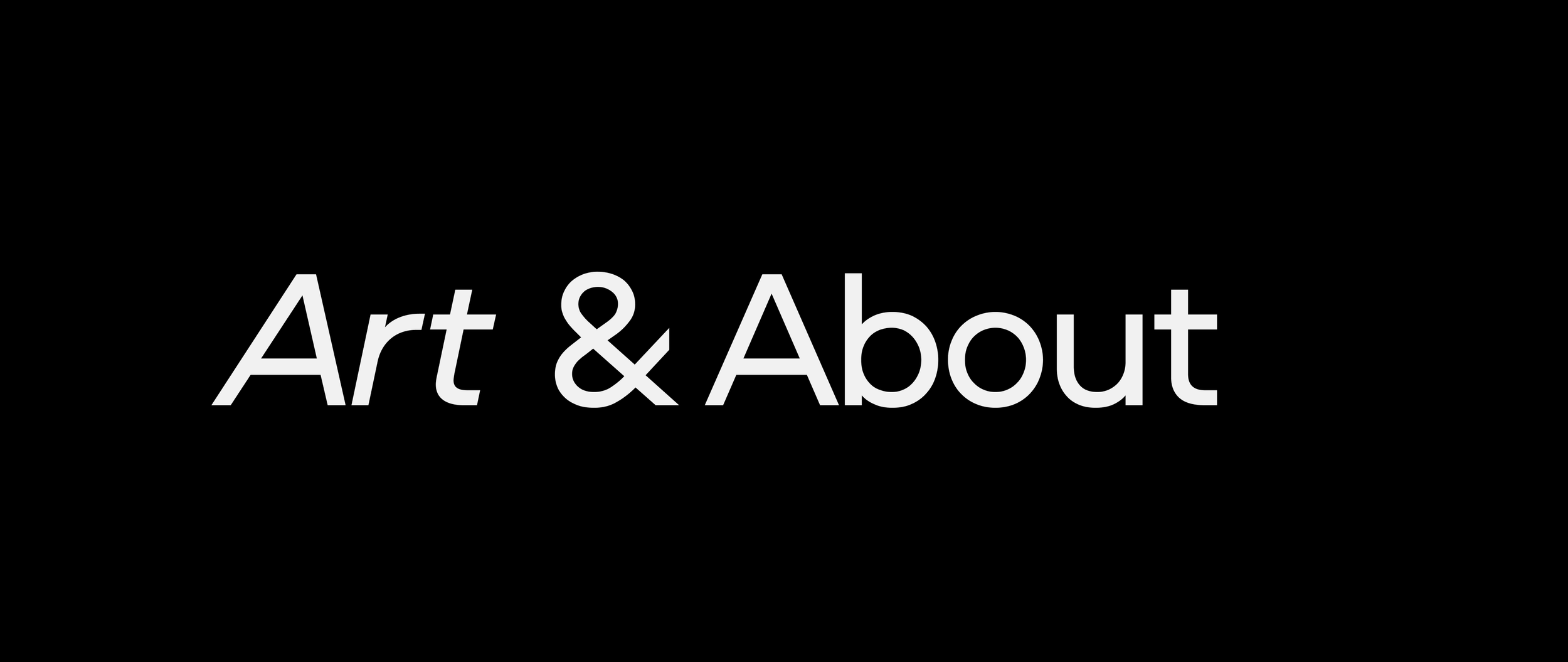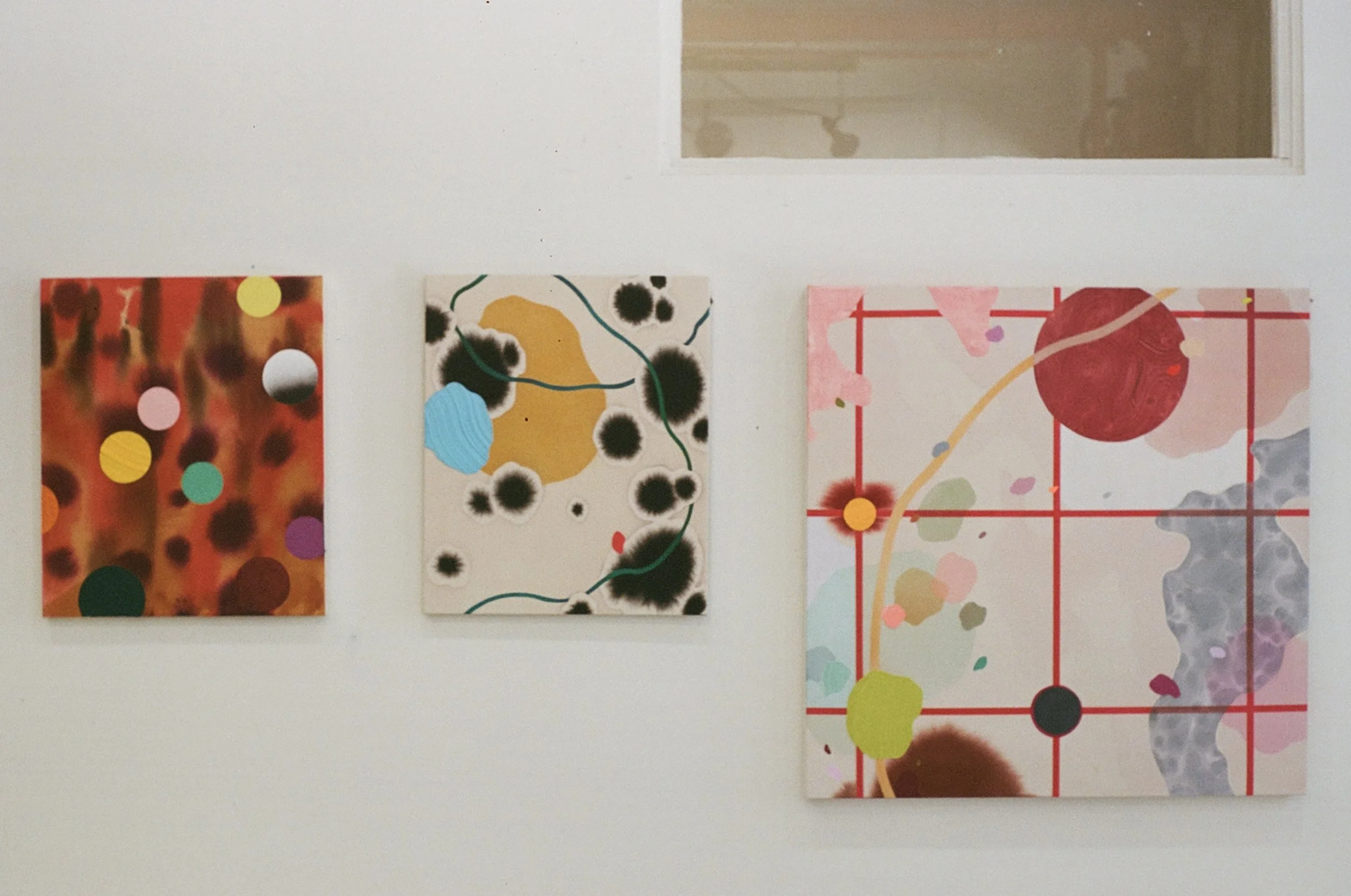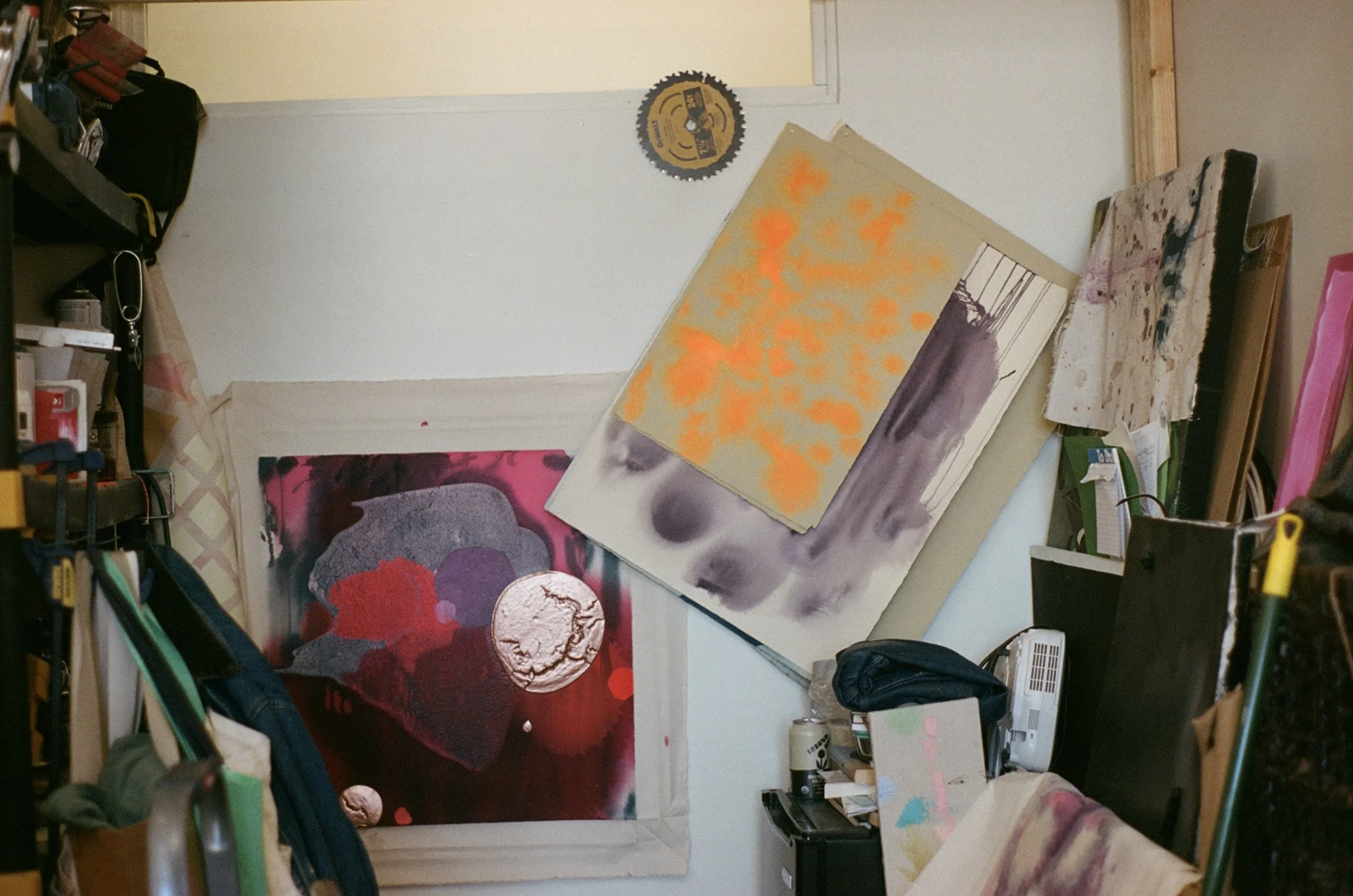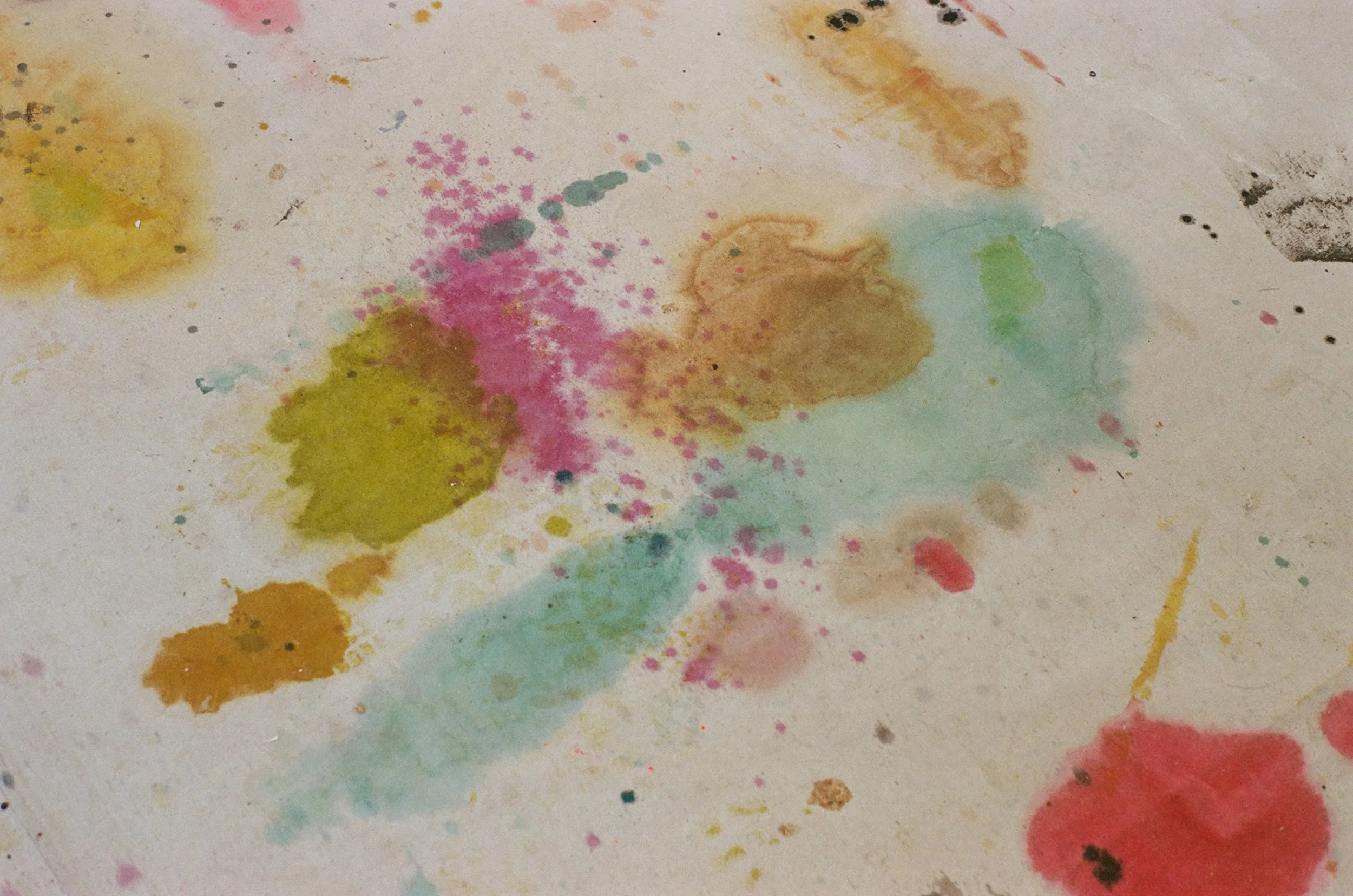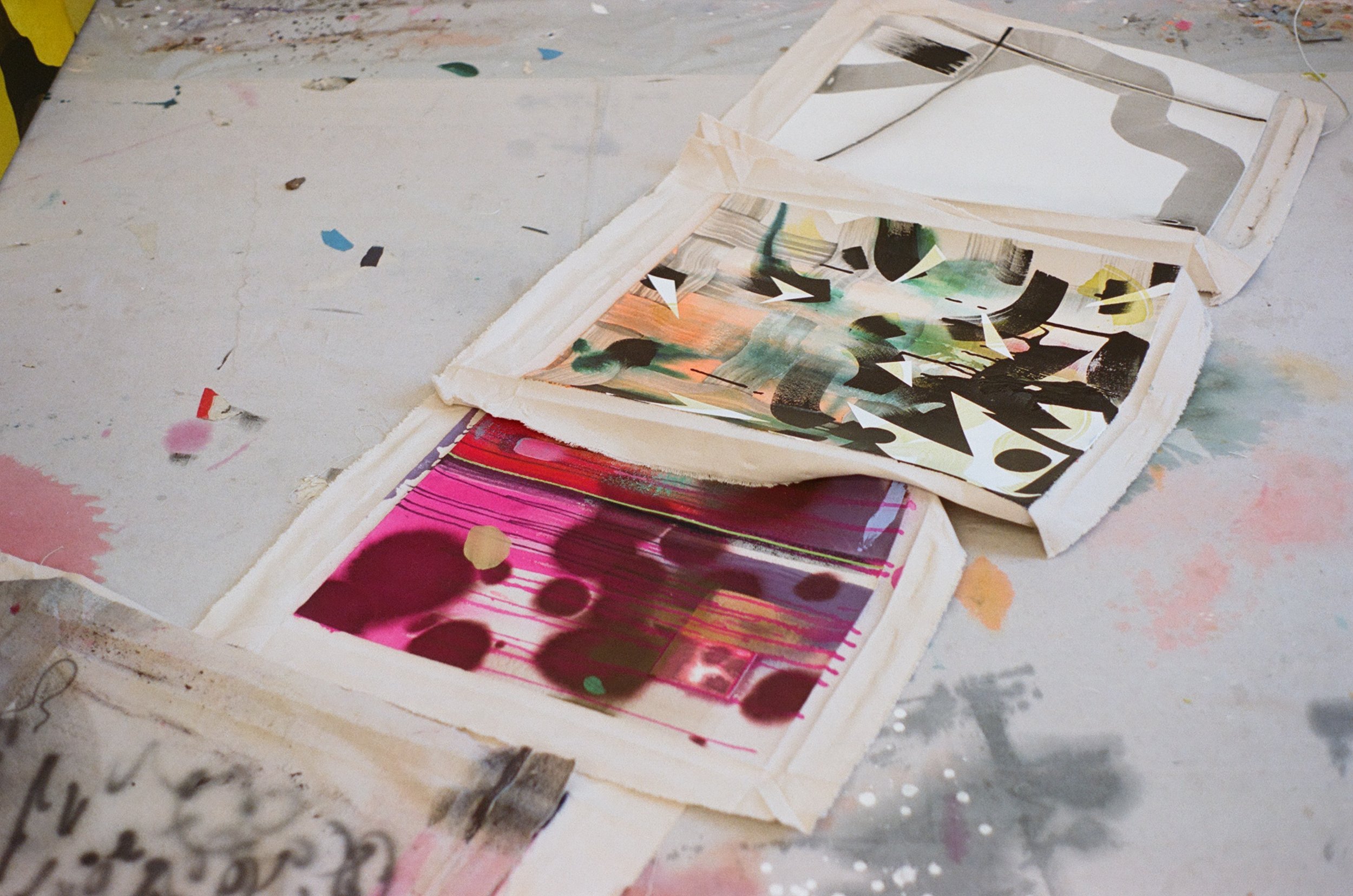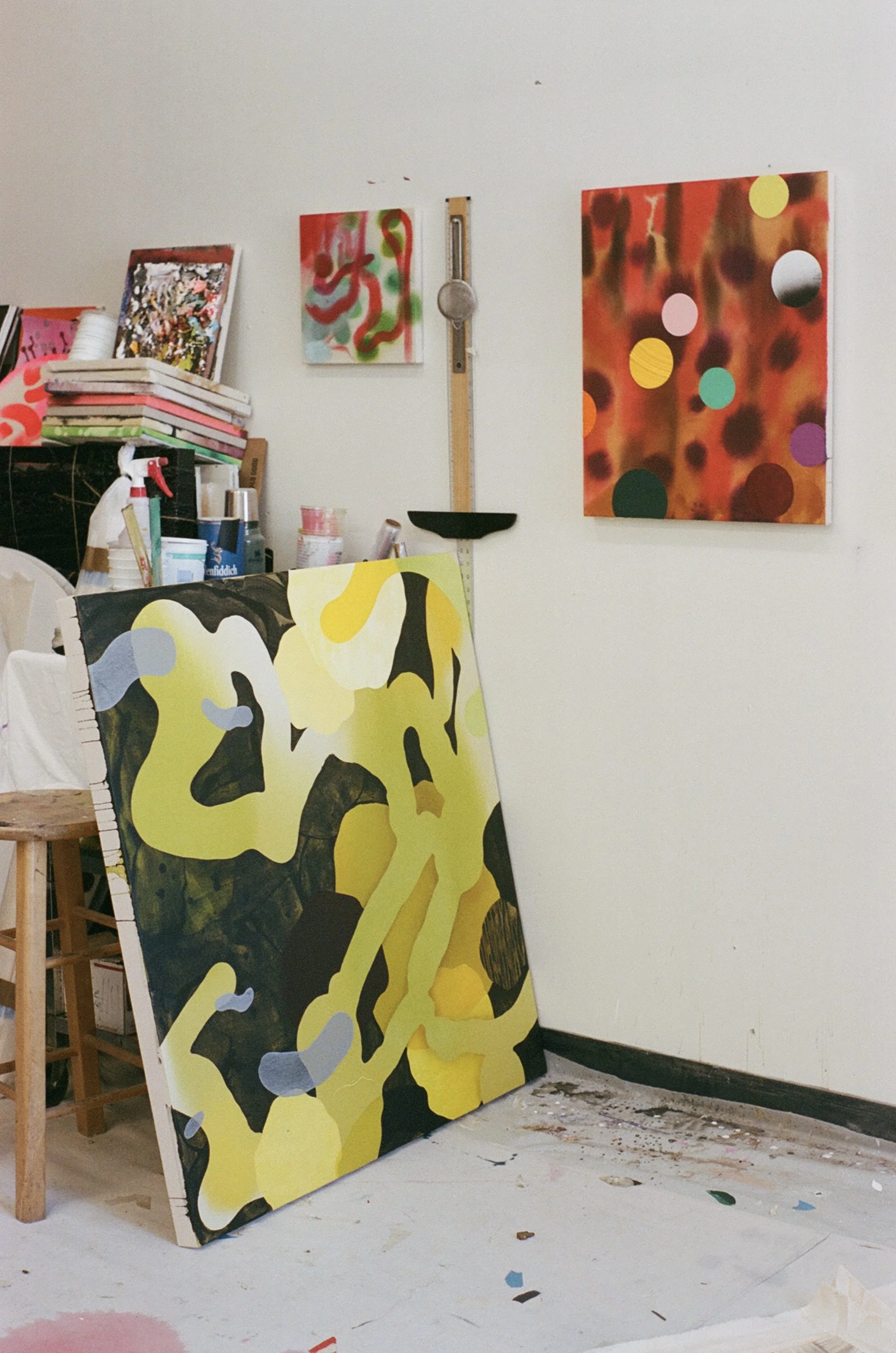Mini Interview: Tanner Lind
Surrounded by Tanner Lind’s vivid, colorful abstract paintings, a conversation unfolded in his studio. The discussion naturally began around his practice—what he was currently making or had made recently.
Flipping through the art books in his studio. The conversation then shifted to the importance of art history and the necessity for artists to recognize the origins of their work, how it intersects with historical or contemporary dialogue, and how they develop their unique approach.
We had an extensive dialogue about the artists Tanner admires and how that influences his practice—if and when it does—as well as movements and "classes" of artists creating work around the same time, with sometimes similar, overlapping, or differing approaches. This led to candid thoughts around paint and paintings.
Ashley Gifford: You have a beautiful collection of art books in your studio, particularly of painters who started working in the 1990s to early Aughts and are still working today. Could you share what you find particularly influential about all of these individual artists?
Tanner Lind: Julie Mehretu: I’m drawn to the sense of vastness in her work. She constructs layered worlds that feel both architectural and atmospheric and are embedded with so much history. There is this kind of in-between space where chaos and precision coexist. Rebecca Morris: I admire her deep commitment to abstraction and the non-objective. Her work has a playful rigor, balancing structure with improvisation, and her manifesto embodies the openness and curiosity I try to bring into my own practice. Charline von Heyl: I love her “anything goes” approach. Each painting is its own strange puzzle, full of unexpected collisions and weird, surprising harmonies. There’s a restlessness in her work that keeps it alive. Laura Owens: Her paintings feel like portals. They are layered, inventive, and full of irreverence. I love the way she combines digital fragments, painterly gestures, and historical references into something completely singular. Molly Zuckerman-Hartung: I feel like her work embodies risk. She pushes materials to their limits, tearing apart the idea of what a painting should be and reconstructing it into something raw and immediate. Amy Sillman: Her work oscillates between humor and seriousness, figuration and abstraction, and is always questioning along the way.
AG: Could we dive into something you mentioned offhand when discussing your practice; how ‘material influences you as much as you’re manipulating the material.’ Could you elaborate on that sentiment?
TL: I'm not really interested in manipulating materials to conform to a vision I have. I don't start with an image in my head and then use paint as a means to that end. I meander and play and experiment, and the materials naturally become participants in the decision-making process. Of course, I am manipulating and using the materials, but working in an improvisational and unplanned way allows the materials to influence me in return.
AG: We’ve been discussing art spaces in town, and this feels like a mandatory question (for Art & About). What’s your favorite gallery in Portland right now?
TL: I always find myself excited about what's going on at ILY2. So many galleries, even some that claim to be alternative, still seem to operate under an invisible set of rules. ILY2 doesn’t feel like that at all. It feels like a space where artists are trusted to follow their own instincts, where work is engaged with on its own terms rather than being measured against an external standard.
AG: My follow-up question — what’s your favorite gallery or museum in the world, and why?
TL: Tough question! I love Hesse Flatow in NY. I’ve never been disappointed when I visit the gallery, and their new space in Tribeca is beautiful. I also love the Walker Art Center in Minneapolis. They have a great collection, and the building architecture is beautiful. I got to see Julie Mehretu’s retrospective there and was blown away. I have a soft spot for the Walker because it was my first exposure to contemporary art. I grew up in North Dakota, and I remember going to the Walker when I was in high school and seeing a show of contemporary painting. It completely changed how I thought about art and what art was. Looking back at that exhibition, Molly Zuckerman Hartung was included as well as Matt Connors, who is another painter I love.
AG: Could you talk to us about your studio practice, how often you go in and what that looks like, and how it aligns with your day-to-day life?
TL: I try to make it to the studio as often as I can. The stretches where I’m there daily, even just for an hour, feel the most productive. A lot of that time isn’t spent painting, though. Sometimes I’m just sitting and looking, letting the work settle in. Other times, I’m puttering around, tinkering with material studies, or running little experiments that may never leave the studio. Most of what I make in there never goes out into the world, but it all feeds the paintings that eventually do. It’s a way to keep my hands and mind moving when I’m waiting for paint to dry or waiting to make the next move. I always work on multiple paintings at once, and I never start with a clear plan or a blueprint. I just begin moving materials around and start layering elements until something pushes back. I think of it less like following a map and more like drawing one as I go. Testing boundaries, finding dead ends, circling back. I’m constantly looking for ways to surprise myself, to create moments of uncertainty. The image is always something I discover along the way. The work really takes shape through a lot of failure and occasional accidents that feel like gifts. Outside the studio, my life tends to be fairly structured, so the studio has become a space where I can unravel a bit. It’s the place where I allow things to stay unresolved and where not knowing is part of the point.
AG: You mentioned that you hung out with a lot of ceramicists when you were in art school. In part because they had a freer-spirited nature and openness in expressing themselves through their art than you experience with the painting cohort. Could you elaborate on that and how that relates to your artistic approach?
TL: I think I was drawn to the ceramic artists because their practice has so much unpredictability embedded in it. Something could explode in the kiln, or a glaze could turn out completely wrong. In undergrad, I was more concerned with the image in painting and less about its materiality or objectness, but I think hanging around ceramic artists subconsciously shifted my mind over the years to think more about the physical part of paint and less about the image. I also found ceramic people to have a tighter-knit community. I loved hanging out with them during the long 4-day wood firings. There's a lot of time sitting around and talking, and sharing, which I didn't experience as much in the painting studio.
AG: What are you listening to when you’re in the studio or outside of it?
TL: I'm always listening to music both in and out of the studio. Most mornings start with coffee and an album or playlist, which sets the tone for the day. In the studio, music helps me get into a rhythm. If I land on a song or album that really catches my attention at a particular moment, I’ll put it on repeat until it almost becomes a kind of mantra. Lately, I’ve had on rotation Sierra Ferrell, M. Ward, Jungle, Bonnie Raitt, GoldFord, The Teskey Brothers, Vulfmon, Eddie 9V, Colter Wall, John Prine, The Sure Fire Soul Ensemble,
AG: What do you do outside of making art that specifically brings you joy or that you find enriching in your life?
TL: Friends around a table sharing a meal or a drink. Days with no agenda. A rose croissant and an americano from Nuvrei. Thrift and antique stores. Discovering new music. Wandering through art supply stores and imagining the possibilities. A nice whiskey. Talking to friends on the phone. Old country music. People watching. Pistachio ice cream. A beer at my neighborhood bar and chatting with the bartenders. Learning something new. The color red. Impromptu nights out with friends. Wandering around with my camera. Cooking. Going to a movie on a Monday afternoon when the theater is empty
AG: What do you like most when you learn about other artists or do a studio visit with them?
TL: I enjoy hearing the mundane details of their studio rituals, how they title things, what they throw out, and when they know a painting is done. I love the sharing of information that happens in studio visits, like new artists to look at, books to read, movies to watch, music to listen to, etc. I’m always fascinated by the gap between what they say they’re doing and what the work is actually doing. I want to hear about what makes an artist excited and I am always eager to talk about materials and processes. I like seeing the environment an artist works in. (The messier the studio, the better in my opinion.)
AG: Top 3 colors (and their paint tube names?)
TL: These are what I've been drawn to a lot lately: Paynes Grey, Transparent Red Oxide, Green Gold (kind of a chartreuse).
Tanner Lind is a painter currently based in Portland, Oregon. Lind has exhibited in solo and group exhibitions nationally, most notably at the Plains Art Museum in Fargo, ND; the Northwest Arts Center in Minot, ND; the South Dakota Art Museum in Brookings, SD; the Hanson Howard Gallery in Ashland, OR; the Patricia Reser Center for the Arts in Beaverton, OR; and at Nationale, Melanie Flood Projects, ILY2, and the Center for Contemporary Art and Culture in Portland, OR. He has been an artist in residence in the School of Design at South Dakota State University and at the McCanna House through The North Dakota Museum of Art. Lind received his BFA from North Dakota State University and his MFA in Visual Studies from the Pacific Northwest College of Art.
